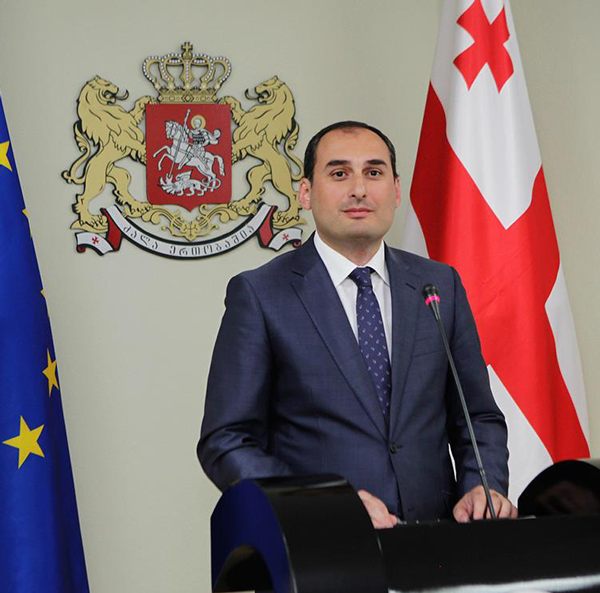“The balance of payments has been improved by USD 700 million. This means that monetary inflows to the country have increased. There are more earnings from export as well as from tourism. In total, this is USD 700 million.”
FactChecktook interest in the accuracy of the statement.
A country’s balance of payments includes comprehensive data about money inflows and outflows. It also illustrates the movement of money between the economy of a specific country and the rest of the world. A country’s balance of payments consists of its current account, capital account and financial account.
A current accountincludes the component of trading with goods and services as well as incomes and transfers. The income component shows inflows of income from abroad (specifically, labour remuneration and investment income) and incomes transferred from abroad. Transfers include current transfers between the residents and non-residents of a country (for instance grants, financial assistance).
A capital accountconsists of purchase/assignations of capital transfers and non-produced non-financial assets. One of the forms of capital transfers is the forgiveness of debt.
A financial accountincludes direct investments, portfolio investments, financial derivatives, other investments and reserve assets.
If a country’s current account is deficit; that is, if more money leaves the country as compared to what comes in, the gap is covered by the financial account (by investments, taking debt and a decrease in monetary reserves).
Presumably, Dimitri Kumsishvili is referring to Georgia’s current account whilst saying that the balance of payments improved by USD 700 million. This idea is further corroborated by the context of his statement where the current account’s components (exports, tourism incomes) are named as elements behind the USD 700 million in the improvement of the balance of payments. Table 1 depicts the current account and changes within its components.
Table 1:
Trend of Changes in Georgia’s Current Account
| Period | Monetary Flow | Current Account (USD Million) | ||||
| Goods | Services | Incomes | Current Transferts | Total | ||
| 2016 2 Q | Inflow | 1,348.01 | 1,425.61 | 425.98 | 612.02 | 3,811.63 |
| Outflow | -3,118.38 | -803.23 | -686.93 | -56.09 | -4,664.63 | |
| Net | -1,770.37 | 622.37 | -260.94 | 555.93 | -853.01 | |
| 2017 2 Q | Inflow | 1,683.65 | 1,675.26 | 485.66 | 675.16 | 4,519.73 |
| Outflow | -3,358.53 | -835.59 | -920.12 | -56.72 | -5,170.96 | |
| Net | -1,674.88 | 839.67 | -434.46 | 618.45 | -651.23 | |
| Change | Inflow | 335.64 | 249.65 | 59.68 | 63.14 | 708.1 |
| Outflow | -240.15 | -32.36 | -233.19 | -0.63 | -506.33 | |
| Net | 95.49 | 217.30 | -173.52 | 62.51 | 201.78 | |
As illustrated by the table, net changes in the current account (difference between the volumes of inflow and outflow) in the first two quarters of 2017 amounted to USD 201 million as compared to the same period of the previous year. Of note at the same time is that inflows (transfers) taken separately increased by USD 708.1 million (this is the figure named by Dimitri Kumsishvili). Of that amount, the growth in export constitutes USD 334 million whilst the growth in tourism incomes constitutes USD 232 million.
We have to take into account that the currency exchange rate is largely affected by the current monetary inflows/outflows instead of the total figures for a given period (for instance, last month’s inflows/outflows have a greater impact as compared to the total figures for half of the year). GEL started to depreciate once again from the end of August. Therefore, the important figures stipulating the depreciation will be given in the balance of payments of the third quarter. For the depreciation period per se, we can say that some figures in regard to changes in particular components of the balance of payments are already available. The growth in export for the first eight months is USD 345 million as compared to the same period of the previous year. Therefore, improvement from foreign trade is only USD 28 million (import deducted from export). The changes in trade flows are positive (USD 40 million) for August taken separately as compared to the same period of the previous year.
Conclusion
As of the first two quarters of 2017, the current account of Georgia’s balance of payments improved by USD 201.8 million as compared to the same period of the previous year whilst the growth in transfers taken separately amounted to USD 708 million. However, these figures include only two quarters; therefore, they would have a lesser impact upon the GEL depreciation trend which started at the end of August.
Dimitri Kumishvili’s statement vis-à-vis the growth in transfers by USD 700 million is true. However, to say that the aforementioned difference is an improvement in the balance of payments by USD 700 million is an incorrect approach. In the first half of the year, the GEL exchange rate was positively affected by the improvement of the current account balance with a USD 201.8 million and not a USD 700 million increase in transfers.
Therefore, Dimitri Kumsishvili’s statement is MOSTLY FALSE.
















